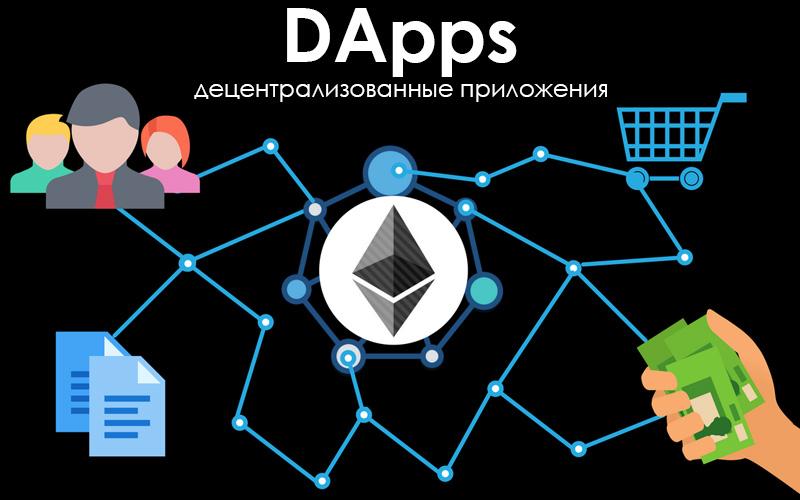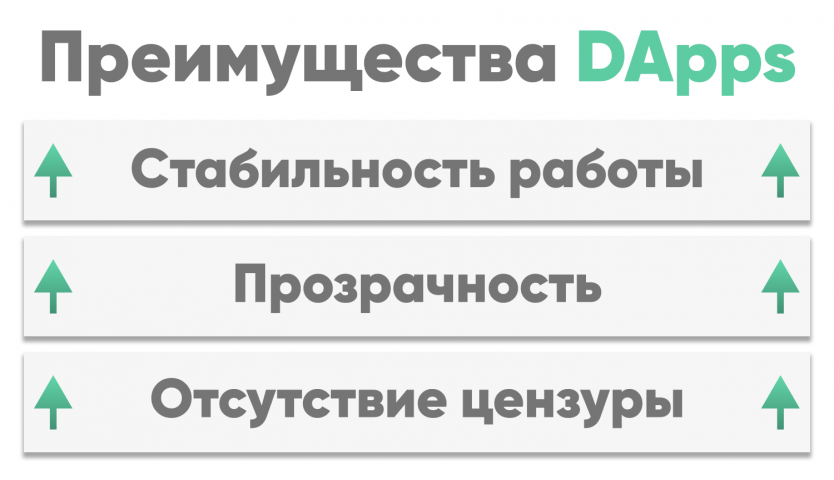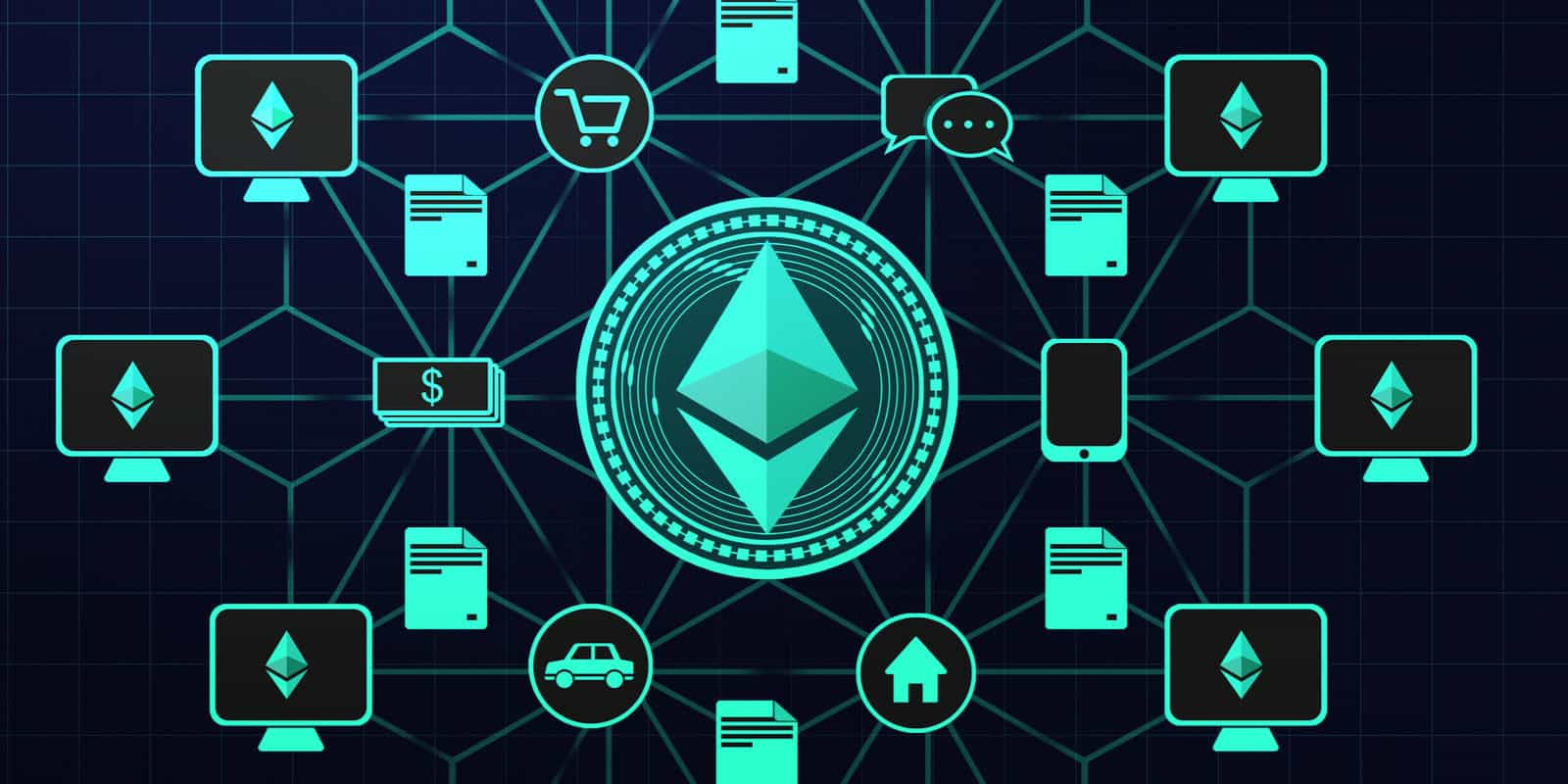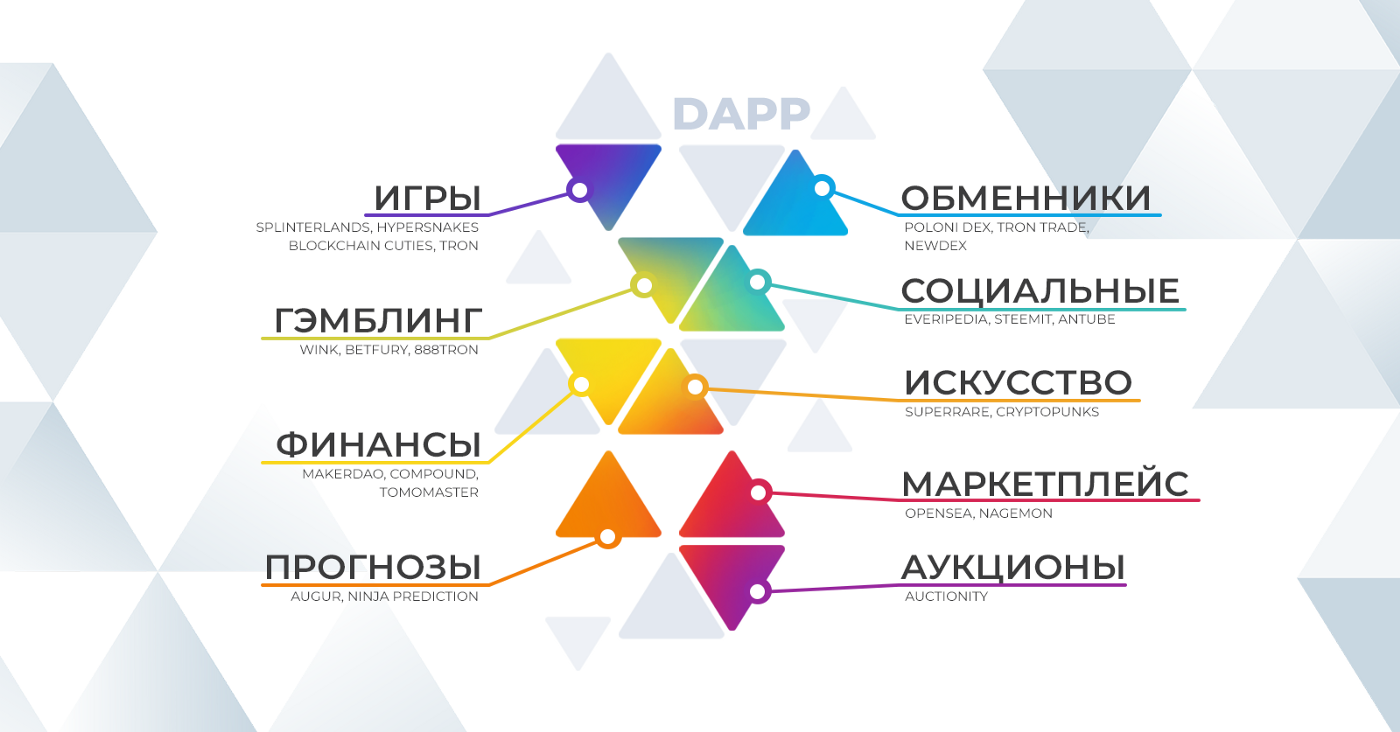Decentralized Applications (dApps)
The popularity of decentralized applications (aka dApps) is growing every year. They are based on blockchain, a modern technology that provides a number of advantages. For example, stability of work and absence of state censorship.
In this article, we'll consider how dApps work, what they are, what advantages and disadvantages they have. We will also look at the prospects of decentralized applications, and whether it is worth investing in their own cryptocurrencies.

What is a dApp
A dApp is an app that operates in a decentralized manner. This means that no specific physical server is running it. To make it clearer, let's compare a dApp to classic apps installed on a smartphone.
The features of conventional apps
Classic apps, like those placed in the Play Market or App Store, are made by specific companies. For example, it can be a social network (VK, Facebook, Instagram), a streaming audio or video service (Spotify, Youtube, Yandex.Music), a banking program (Sberbank, Tinkoff, Alfa Bank). In this case:
In this case:
- The app is completely controlled by a given company or group of people. The developer is free to disable the program or modify it as he wishes. The user chooses only one thing - to use the application or not.
- Data is stored on physical servers. Workability is ensured by the fact that a copy of the application installed on the user's phone exchanges information with the server. If there is a failure on the server, the program can stop working. And the user's data is in specific hands. Their confidentiality and safety depends entirely on the integrity and quality of the company, which owns the application.
- The user has no influence on the functionality. If he finds a bug or wants to add a new feature, the only thing he can do is write to the developers via the feedback form.
This is convenient for the user, but unreliable. A software failure can break the system, so it can't be used until it's repaired by the company. Also, if you give sensitive data, whether it's a credit card number or a private message to another user, there is a risk of losing it. In addition, developers can give access to this data to third parties without the user's knowledge. This is illegal, but possible.

Features of decentralized applications
As its name makes clear, a dApp does not have a single center providing and regulating operation. It operates on a blockchain, a distributed data ledger. The blockchain's operability is ensured by a huge number of computers placed in dozens of countries. Even if part of it fails, it will not cause the entire application to fail, and it will continue to function.
- A decentralized application is run by people and then functions autonomously. The developer cannot change the functionality without the wishes of the users or disrupt the system.
- Open source. Anyone can look at the code and find out how the application operates. Therefore, there are no hidden functions, which means no hidden risks. You can be sure, for example, that the program doesn't pass sensitive data to third parties.
- The community directly affects the functionality of the app. Any user is able to suggest a modification. For example, to fix a bug, or to add a new feature. If a majority of users vote to support the change, it will be automatically added to the blockchain and the code will be updated.
- Decentralized applications (dApps) are a better way to provide users with some functionality. Originally there were computer programs, then - applications on smartphones. And now we can observe the best decentralized apps, which are characterized by stability, reliability, transparency and flexibility.
Advantages of dApps
The main advantages of decentralized applications are:
- Stability. Disruption of a dApp is almost impossible. It is supported by tens and hundreds of thousands of computers located in dozens of countries. As long as at least some of them are still connected to the network - blockchain keeps working. So do the decentralized apps built on it.
- Transparency. The open source code increases the level of security - users can be 100% sure of exactly how dApps work and what to expect from their use.
- No censorship. Government agencies, companies, developers - nobody can disconnect the application from the network, delete the content placed in it, block the user's access.
- Privacy. To use a decentralized application there is no need to register and enter personal data. Users are anonymous. The only thing required to connect to most dApps is a cryptocurrency wallet, which is also anonymous until the user reveals his/her own involvement in it.
- Flexibility. If an app's functionality becomes outdated or needs to be updated, any user will be able to suggest an update. If the majority support the idea, then the code will be updated instantly.

Disadvantages of dApps
It's crucial to understand that decentralized applications have only become widespread and actually used in the last 5 years. Right now, dApp is an innovation and developing technology that is at the beginning of its journey. Most likely, over time, most of the disadvantages will be eliminated. However, at this point, the following disadvantages can be highlighted:
- Difficulty in launching. Once the application is deployed on the blockchain, developers are no longer able to make changes easily and quickly. Therefore, the dApp needs to be fully designed and developed before launching. It's almost impossible to deploy a half-baked product and refine it gradually - it will be even harder than full development before launch.
- Difficulty of application for the user. Most apps are more complicated to learn than their traditional equivalents. For example, the user needs to be able to work with a cryptocurrency wallet and understand the features of blockchain technology.
- Expensive to use. Every action in dApp is a transaction recorded in the blockchain. Consequently, performing it requires paying a standard fee. Currently, most dApps are deployed on the Ethereum blockchain. Transaction fees within it can be as high as a few tens or hundreds of dollars - it depends on the load on the network.
- Irreversible errors. A transaction that has been entered into the blockchain cannot be reversed. If you make a mistake using a traditional app and send funds to the wrong address, an appeal to the bank will help you get them back. However, in case you send cryptocurrency to a non-existent address, it will be lost forever. If you send it to an existing address, you won't be able to contact the owner of the wallet, because these addresses are anonymous and not tied to your identity. This also applies to other types of apps - you won't be able to undo wrong actions.
- Speed of work. It's the other side of the stability that blockchain provides. The speed of operation depends on the characteristics of the network on which the dApp is running. It can take several minutes to complete a transaction.
- Risk of hacking. A vulnerability can be found in the source code, undetected by the developers and users. Depending on the severity of the bug, this can lead to consequences of varying scale, up to and including the loss of funds transferred to the management of the application by the users (e.g. left as collateral to obtain a loan in cryptocurrency).

Types of dApps
When you figure out how dApps work, it quickly becomes obvious that decentralized apps can be quite different. Everyone divides them into categories in their own way. For example, the developers of the Ethereum blockchain distinguish 3 groups of dApps:
- Financial. For example, decentralized platforms where you can exchange cryptocurrency, or credit services.
- Partially financial. These include auctions, the fairness of which is guaranteed by the open source code, or games with their own cryptocurrency. That is, apps in which financial transactions are only a tool to solve problems.
- Non-financial. For example, it can be an application for sharing disk space for data storage.
The term "dApp" describes all applications that work in a decentralized way, on a blockchain. So, it can be anything - a game, a social network, a cryptocurrency exchanger. The main thing is that the app has to be open source and operate on a blockchain. New products on a regular basis can be checked in dapplists.

Prospects for dApps and whether it's worth investing
DApps have just begun to evolve, so it's impossible to predict their future 100% accurately. As time goes by, some dApps will become irrelevant, while some of the new top decentralized apps will occupy their niche and become popular.
Whether it's worth investing in a cryptocurrency dApp depends on the dApp itself. For example, there is a game called Sandbox, which we mentioned in our article. It is a dApp, and the SAND cryptocurrency is used as an important part of the gameplay. If the game becomes more popular, it will join the top decentralized apps list, and the price of coins will increase accordingly. In case the game becomes irrelevant, the value of cryptocurrency may drop to zero.
That's why it is recommended to invest in reliable cryptocurrencies, which will definitely stay relevant in the coming years, for example Bitcoin, Ethereum, Cardano.
Where to buy cryptocurrency
Investing in cryptocurrencies can bring big profits. However, it can also turn into a loss of money if you choose an unreliable method of acquiring coins. To avoid the risk of facing scammers, you should only trust exchangers with an official license. You should also give preference to the platforms that are easy to master. It makes no sense to understand the complicated interfaces of professional services if you just want to buy cryptocurrency to sell it at a higher price.
A great choice would be the Broex exchanger. It belongs to a company that has received an official license to conduct activities related to cryptocurrencies. Broex has passed all the necessary inspections by Estonian regulators. Using a state-approved exchanger is a safe way to invest in cryptocurrencies.
Broex is designed to be user-friendly for beginners. It has an intuitive interface that can be mastered in 5-10 minutes. There are other advantages:
- The minimum deposit is 1500 rubles. Investments are available, even if you want to buy cryptocurrency for a small amount.
- Low commissions. From 0.1%, and for some exchanges there are no commissions at all.
- Mobile app. It provides access to buying and selling cryptocurrencies from anywhere in the world - you only need to have an Internet connection.
- Convenient replenishment. You can make a deposit with your bank card or via AdvCash. Money is credited instantly.
- Broex is also a custodial wallet for storing cryptocurrencies. Therefore, you don't have to withdraw the coins you buy to third-party wallets. This is convenient for newbies. There is no need to worry about how the wallet apps work. Assets are displayed in your personal account, and you can sell them at any time.
Also, Broex has 24/7 technical support. If you face a problem or have a question, our support team is there to help you quickly figure it out and get back to working with cryptocurrencies.